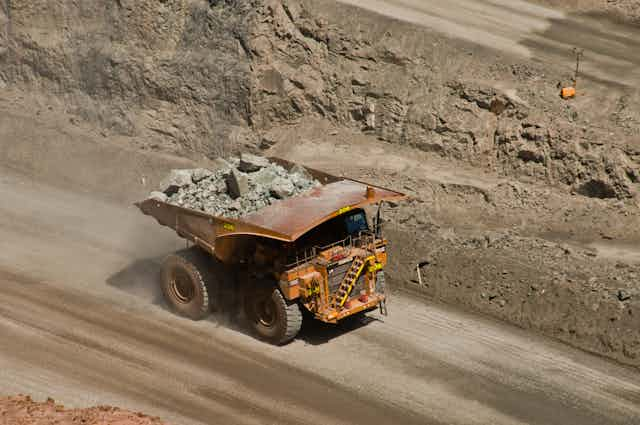Dealing with mineral ores is rapidly becoming more complex as ore grade is decreasing, mines are getting deeper and the cost of energy and labour increases.
The minerals industry has seen an increase in production costs of 70% since the mid 1980s and ore quality has, on average, declined by 50%.
Ore “complexity” has also increased during the same period of time, with valuable components distributed sparsely and finely within the ore and often associated with a high content of impurities that are difficult to remove.
There has also been an increase in global competition, metal price volatility, and pressures to improve environmental performance.
Since 2004 the price for copper has increased by 50% and during the same time the price for iron ore has increased by four times.
This means there is a very pressing and growing need for new competitive minerals processing technologies.
The old ways
Current minerals processing strategies have not changed significantly over the past century and the focus has usually been on increasing throughput.
The result of this is that mining and minerals processing now consumes 5% of the world’s total energy consumption, almost as much as Africa at 5.4% or the Middle East at 5.2%.
Grinding the ore itself can contribute more than 60% of the energy consumption of the entire process.
Time for change
Australia is a leading, resource-rich country and should pave the way for change. So how can we make minerals processing more efficient?
To invent new minerals processing technologies we need new research. Our hypothesis is based on a new research strategy we call Oreomics.
Oreomics is a new word for our systems approach in mineral processing and it is a mix of two words; Ore and -omics. We have been inspired by the -omics (genomics, proteomics, metabolomics etc) in systems biology, which were game changing for developing this field.
But what is Oreomics?

It has the potential to optimise current technologies and to discover new technologies that can deal with future complex and low-grade ores using less energy, labour and cost which as a consequence will lead to a smaller environmental footprint.
The research should result in new knowledge about molecular processes at the mineral surface. The state of mineral surfaces is the major controlling factor for separation process technologies. Finding ways to minimise the grinding and develop new leaching methods is our goal.
We have furthered our knowledge through hypothesis-driven research – and this should continue – but recent scientific advances using advanced mathematical statistics open up new possibilities.
For example, magnetic resonance (MR) or computed tomography (CT) scanners and other sophisticated imaging technologies, many of which come from other areas of science and technology.
We have only just begun realising how effective these are. They are sometimes used to spot diseases such as cancer and in future applications they are used to develop new materials with outstanding performance.
The new European facility being built in Lund for instance is predicted to result in game changing technologies in health, materials science etc, and they are so effective that we need new methods for dealing with the data they produce.
How can we use this information to extract metal from the ore in a new way? We are now in the realms of “Big Data” and we need to use Big Data tools to extract the relevant information and relate this to processing.
We should be guided and encouraged by the success in another field: systems biology. The value of dealing with Big Data has recently been reported here in sport.
From biology to minerals
There are many thousands of processes in a biological cell: DNA, RNA, proteins, enzymes etc. all taking part in, and carrying out, important functions. One way or another all these processes are connected, much like a traffic system in a large city: a traffic jam in a particular location affects the traffic in other locations in the city.
Through the use of Big Data tools our understanding of how cell processes are connected has now reached a state where new medicines and treatments are likely to increase significantly over the coming years.
We believe that industry and academic research are now well equipped to do the same in minerals processing. The methods, technologies and knowledge needed for a systems approach already exist in other fields.
Some mining companies already use sensors connected to control systems for controlling various simple processes such as pH and flow rates to improve performance. So the industry has relevant infrastructure for optimisation control, although new and more sophisticated sensors are likely to be needed.
We believe that Oreomics can optimise current plant performance and lead to discoveries for completely new minerals processing methods.
If change doesn’t happen

Without new insights we may face an insurmountable barrier to exploiting our increasingly marginal mineral ore deposits. This could lead to limited supply of raw materials, reduced manufacturing and very high prices for consumer products and technology.
If the same laws of nature apply to minerals processing as in systems biology, Oreomics will lead to rapid assessment and prediction of processing response for new ores and ore changes, and to innovations in minerals processing technologies – game changing innovations – for overcoming future challenges facing the industry.

